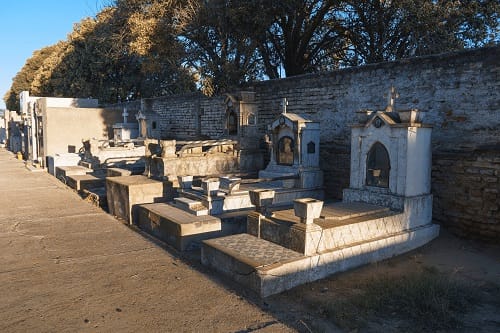When it comes to choosing the final disposition of a loved one, many people are faced with the decision between burial and cremation. While both options have their pros and cons, it is important to consider the environmental impact of death that comes with each choice.

Compare Burial vs Cremation
Burial and cremation are two common ways to dispose of a deceased person’s body. While both methods have their own unique set of environmental considerations, it is generally accepted that cremation has a smaller environmental impact than burial.
What is the Environmental Impact of Burial?

The traditional method of burial involves placing the deceased in a coffin or casket and burying them in a cemetery. While cemeteries are often well-maintained and can provide an important gathering place for families and friends, they can also take up a significant amount of land. As the population continues to grow, the demand for cemetery space increases, leading to the destruction of natural habitats and the loss of biodiversity. This use of land for cemeteries is especially important in urban areas where land is already in short supply.
The process of preparing a body for burial (including embalming) often involves the use of toxic chemicals that can leach into the soil and potentially contaminate groundwater. The use of chemicals such as formaldehyde can have harmful effects on the environment.
Furthermore, traditional burials often involve the use of materials that are not biodegradable. Caskets, for example, are typically made of wood or metal, which can take hundreds of years to break down. In addition, grave liners and vaults are often used to prevent the ground from sinking, which can further contribute to the loss of valuable land.

What is the Environmental Impact of Cremation?
Cremation, on the other hand, is a process where the body is reduced to ash and bone fragments. Cremation can typically be completed in just a few hours, and the remains of the deceased person can be returned to the family in an urn, which takes up significantly less space than a traditional burial plot. While cremation does not require the use of chemicals, it does have its own environmental drawbacks.
The process of cremation requires a significant amount of energy, which is typically generated by burning fossil fuels such as natural gas or propane. This contributes to air pollution and greenhouse gas emissions, which can have a negative impact on the environment. In addition, the high temperatures used in cremation can release toxic chemicals such as dioxins and mercury into the atmosphere.
Cremation can actually help to reduce the demand for land, as it allows for the cremated remains of multiple people to be interred in a single plot. This can help to free up land that would otherwise be used for traditional burials.
Of course, it is important to note that cremation is not a completely environmentally-friendly option. The process does release carbon dioxide and other pollutants into the air, and it is not a sustainable solution on a large scale. However, compared to traditional burial, cremation does have a smaller environmental impact.
What is the most environmentally friendly burial?
While cremation does have a smaller environmental impact than burial, there are still steps that can be taken to make both processes more sustainable. By choosing more environmentally-friendly options and considering the long-term impact of our choices, we can help to minimize the environmental impact of disposing of our loved ones’ remains.

How to Reduce the Environmental Impact of Both Burial and Cremation
One way to reduce the environmental impact of both burial and cremation is to choose more sustainable options. For example, instead of a traditional casket, a biodegradable casket made of natural materials like bamboo or wicker can be used. These caskets can break down much more quickly, reducing the amount of land required for burial.
In addition, green burials are becoming increasingly popular. In a green burial, the body is not embalmed and is instead buried in a biodegradable casket or shroud. Green burials are typically conducted in natural burial grounds, which are carefully managed to minimize their impact on the environment.
Another sustainable option is natural burial, where the body is buried without the use of a coffin or casket. This allows the body to decompose naturally and return to the earth, providing nourishment for plants and other organisms. Natural burial can be done in a dedicated natural burial ground, where the land is preserved in its natural state and graves are marked with biodegradable markers. This allows the land to continue to support biodiversity and provide a space for families and friends to visit and remember their loved ones.
For those choosing cremation, there are also sustainable options available. Some cremation facilities are beginning to use cleaner-burning fuels, such as natural gas, to reduce their environmental impact. In addition, the remains of the deceased can be turned into memorial diamonds or other keepsakes, reducing the amount of waste produced by the cremation process.
Another sustainable option is cremation with water rather than flame. This process, known as alkaline hydrolysis or aquamation, uses water and alkaline solutions to break down the body instead of high heat. This results in a lower carbon footprint and reduces the release of toxic chemicals into the environment.

Conclusion
Regardless of the method chosen, it is important to consider the environmental impact of burial and cremation. While both options have their drawbacks, there are sustainable alternatives that can provide a respectful and environmentally-friendly way to honor the memory of a loved one. By considering the environmental impact of our choices, we can make a positive difference for future generations.